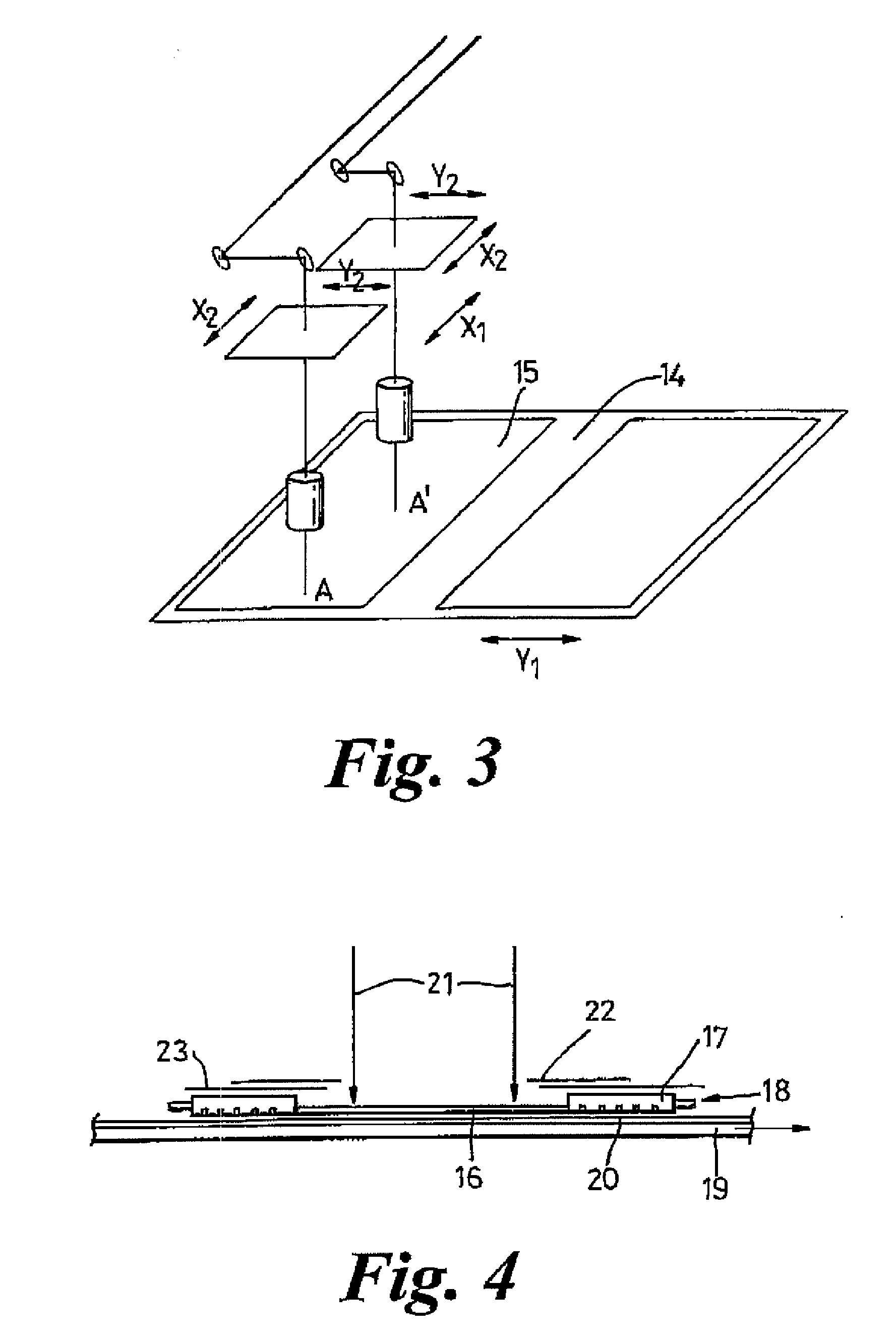Exposure method and tool
a technology applied in the field of exposure method and exposure tool, can solve the problems of pattern defect, low yield, and low mask lifetime, and achieve the effects of avoiding significant resolution loss, avoiding loss of resolution, and simple construction
- Summary
- Abstract
- Description
- Claims
- Application Information
AI Technical Summary
Benefits of technology
Problems solved by technology
Method used
Image
Examples
Embodiment Construction
[0082]FIG. 1 shows the principle of the SIS exposure method. A substrate 1 coated with a photo resist layer 2 is moved progressively under the exposing pulsed radiation beam 3 in direction Y. The beam creates an image on the resist that corresponds to the required pixel or cell structure of the FPD. In the figure the image is shown to contain 6 pixel cells in the direction in which the substrate is moving. Each pulse of radiation hence exposes a band of resist that is 6 cells wide. Between laser pulses the substrate moves exactly 1 cell pitch so that the next pulse creates a pattern that exactly overlaps the first but is displaced by 1 cell pitch. In the figure shown where the beam is 6 cells wide each area of resist receives 6 pulses of radiation and then moves from the beam.
[0083]FIG. 2 shows a possible geometry for an SIS projection exposure tool. A glass substrate 5, coated with an indium-tin oxide (‘ITO’) or tin oxide (‘SnO2’) layer and a suitable resist layer, which is to be u...
PUM
| Property | Measurement | Unit |
|---|---|---|
| wavelength | aaaaa | aaaaa |
| diameter | aaaaa | aaaaa |
| sizes | aaaaa | aaaaa |
Abstract
Description
Claims
Application Information
 Login to View More
Login to View More - R&D
- Intellectual Property
- Life Sciences
- Materials
- Tech Scout
- Unparalleled Data Quality
- Higher Quality Content
- 60% Fewer Hallucinations
Browse by: Latest US Patents, China's latest patents, Technical Efficacy Thesaurus, Application Domain, Technology Topic, Popular Technical Reports.
© 2025 PatSnap. All rights reserved.Legal|Privacy policy|Modern Slavery Act Transparency Statement|Sitemap|About US| Contact US: help@patsnap.com



